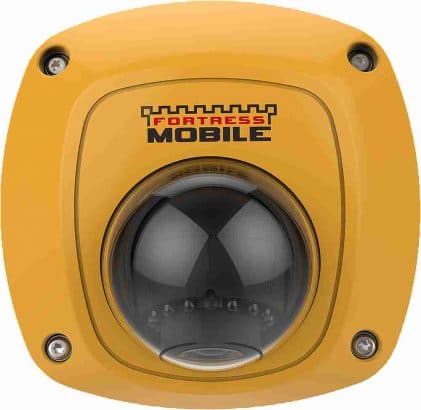Sponsored post by Jayesh Mehta
What used to be mainly for police cars and buses has become increasingly popular in personal and commercial vehicles. No, we aren’t talking partitions between drivers and passengers, although some parents may want that! We’re talking dash cameras.
Before we get into the benefits, we first need to differentiate between types of dashcams. There are the ones meant for the public that you can buy on Amazon or in box stores.
These are cheaper but only capture video, typically at lower resolutions and smaller storage (overwrites within days). We will not be talking about these. Commercial dashcams usually come with DVR/hard drive storage, video playback, account for vibration, and have higher quality video, to name a few features. We will be talking about these.
Accident Recording
Accident recording is the most obvious reason people install dashcams on their vehicles. If an accident occurs and you have a recording of the incident, then you have the advantage of showing the authorities what really happened and whose fault it actually is.
This also speeds up insurance claims, as you now have a video recording that you can send to your insurance company typically the same day, and in some cases, within minutes of the accident.
Some companies also offer an AI camera for the inward-facing camera that monitors the driver’s behaviors, such as tracking eye movements if they are on the phone/texting or falling asleep
All this prevents accident fraud, like pulling in front of your driver’s vehicle, braking hard, etc. (purposely creating an accident to get a big payout from you). This also helps your drivers’ driving record when an accident happens, and they are not at fault.
Sophisticated Features
Many dashcams have a lot of valuable features that make them even more essential for drivers and business owners alike. These state-of-the-art dashcams have GPS integrated with them so you can accurately track where an incident occurred, even days later.
Some have voice reminders and accelerometers that alert the driver or fleet manager that the vehicle is driven unsafely (speeding, hard braking, hard turns). Other models may include live view capabilities that allow fleet managers to watch the fleet in real-time while driving down the road.
These dashcams also have either the internal SD card or hard drive (preferred) to be removed and reviewed on a computer. Some also can store videos on the cloud, so you don’t have to wait for the vehicle to come back to the home yard (significantly beneficial for long hauls or businesses that vehicles don’t return the same day). Some of the more sophisticated units even have proprietary software to aid in the viewing, recording, editing (clipping to only the relevant recording), and sending videos.
Driver Monitoring
Some dashcams are dual view cams, so you have one facing the road and one facing the driver/inside the cab. This helps see your drivers’ reactions during accidents or other incidents that you’d like to monitor (hard braking, etc.). Some companies also offer an AI camera for the inward-facing camera that monitors the driver’s behaviors, such as tracking eye movements if they are on the phone/texting or falling asleep. Alerts can be sent to either the fleet manager (who can then contact the driver to take a break), the driver, or both.
The dashcams that also have GPS will also show speed readings during incidents. This may all seem to be big brother-ish, but this can help reduce driver errors and help prevent accidents due to fatigue, distracted driving, and more.
Insurance savings
As stated earlier, dashcams can radically improve the insurance claims process. With clear video evidence, you can give insurance providers more context, which leads to quicker claim resolutions. Fewer fraudulent claims or accidents caused by your driver will keep your premiums stable.
Plus, integrating dashcams in your fleet tells insurance firms that you take fleet safety seriously. Some insurance companies offer discounts if you install dashcams, as dashcams help to improve driver behavior and the fleet’s general safety level. These premium discounts can vary, so you need to check with your provider or possibly shop around for those providers that will offer the best values.
Driver Training Program
Not every driver is perfect, even the ones with decades of experience. There is always room for improvement.
Fleet managers can improve their driver coaching programs with the help of dashcams. When critical safety events happen, safety managers can use the videos recorded by dashcams and show drivers what went wrong and, more importantly, how to prevent similar incidents in the future. With video, conversations become based on evidence and result in practical tips and less combative than making assumptions or misinformation.
This also can help with the insurance aspect mentioned previously, as some insurers advise on driver training and making it more effective.
Improve safety and efficiency with dashcams
Dashcam technology is radically changing the fleet industry for the better by ensuring vehicle and driver security and safety, saving money, and improving driver coaching programs. There are a lot of companies offering commercial dashcams. Check their features and capabilities to see which one may be right for you financially and practically!
Jayesh Mehta is the Director of Marketing at Fortress Mobile. He is also the author of “Rogue’s Guide to Acquisition: Principles from the Final Frontier”


